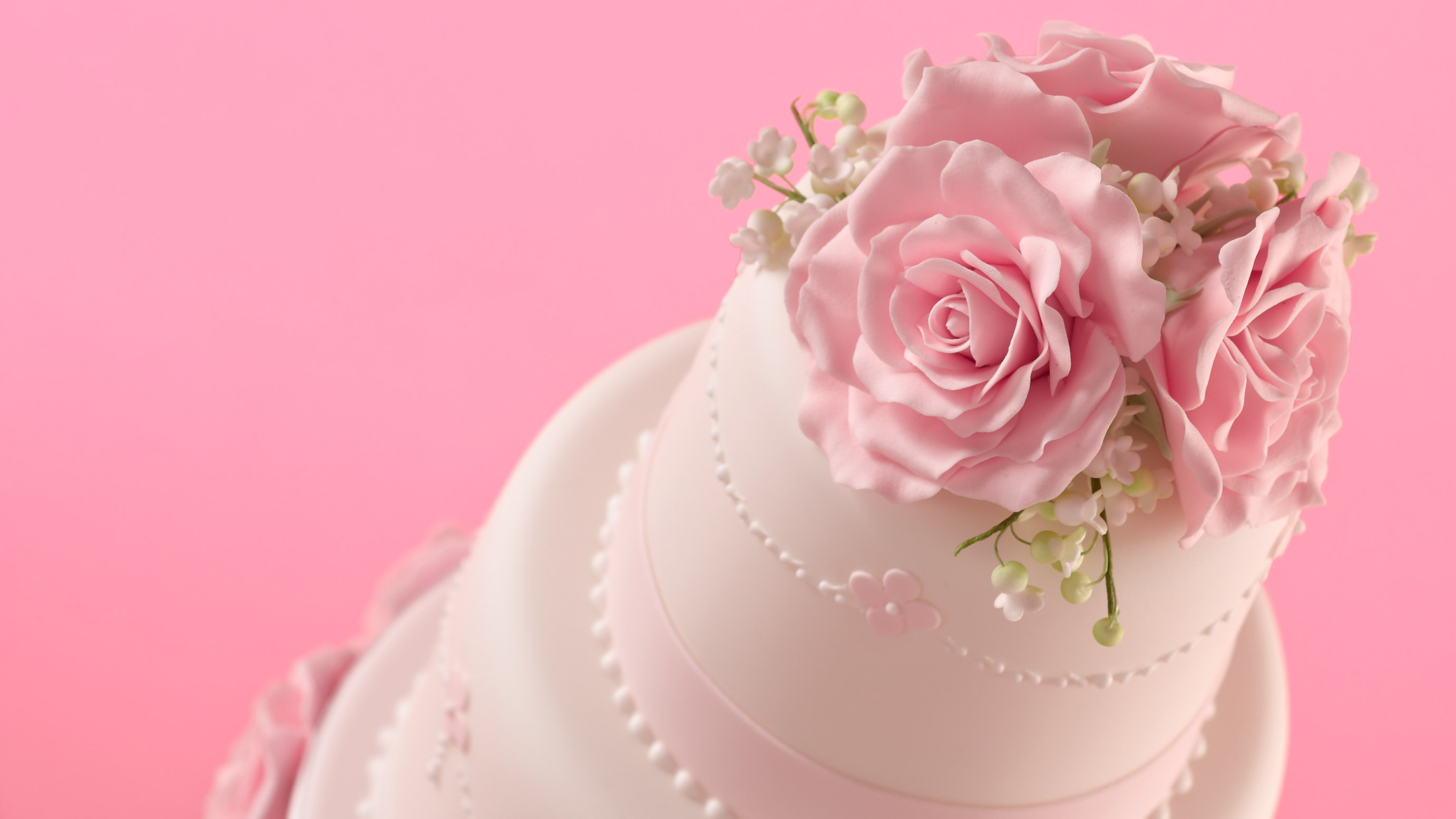How to Decorate a Wedding Cake
Wednesday 16th March 2016
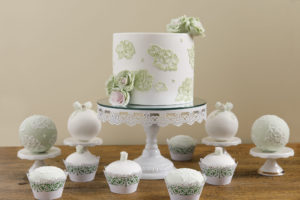
If ever there is an occasion for a showstopper cake then a wedding is it. As the highlight of the wedding feast, the cake is not only a great culinary spectacle, it is also symbolically important. Historically the bride would cut the cake and distribute slices to guests to symbolise fertility, but as wedding parties grew cakes had to become bigger to cater for them, which is where the tiered approach came from. Icing needed to become increasingly robust to support the layers and often it needed two people to cut it. The unified slicing of the cake by the couple has come to represent their commitment to each other.
Simple wedding cake decorating tips and ideas
Once you’ve made the decision to make a wedding cake there are several considerations.
- The first thing you will need to think about is the size of the cake. Traditionally every guest should be offered a slice, so it needs to be big enough to cater for potentially very large numbers of people. This is where the tiers come in. Some wedding cakes have as many as seven tiers, others even more
- If this is the first time you’ve tackled a wedding cake, it is often good to begin with a round cake as these are far easier to cover with icing than other shaped cakes.
- While fruitcake is traditional, it’s become increasingly common to choose different types of cake for each layer: sponge, chocolate, coffee, the bride and groom’s favourite cakes can form different tiers. It makes sense to use the heaviest cake as the base layer. This is usually the fruitcake as its density makes a good foundation on which to support the other tiers.
- Whether you’re ordering a cake or making your own, cost is a consideration. Ingredients can be expensive, particularly if you are catering for a large number of people. Research your recipes first and work out which is the best cake for your budget.
- The finish of the cake is important. While buttercream looks lovely, if you’re in a marquee on a hot summer’s day then it might melt. The same is true for meringue and cream. A fondant finish is a popular choice because it doesn’t even need to be refrigerated.
- Consider collaborating with the florist so you can use the same flowers for the ceremony on your wedding cake. Be aware, as with fresh fruit, flowers are perishable and will need to be prepared very close to the time the cake is presented to avoid wilting.
- Although plastic figurines possess a certain retro chic, there are so many exciting and inventive ways to decorate your wedding cake that it’s worth exploring sugar craft decorations, perhaps as an inventive alternative activity for a hen do.
How to cover a wedding cake in fondant icing
Before you get onto the decoration, you’ll want to make sure you have the perfect cake base on which to work. You might elect to use royal icing, which sets very firmly. Royal icing is applied with a palette knife and has a very different finish to fondant. It can sometimes be tough to cut through and the icing can shatter. The following simple steps will help you through the process of covering your cake in ready to roll fondant icing, which is an increasingly popular choice for the reason that it is very versatile and easy to cut.
Consistency is key
Get kneading to create the perfect rolling-ready consistency for your icing, especially if the ready-to-roll icing comes from a packet.
Prepare your cake for covering
The more even the surface of your cake, the smoother the icing will look. You can first coat your cake in buttercream or jam to even out any lumps and bumps. This also helps your fondant to stick to the surface of your cake. A layer of marzipan also helps to create a smooth surface.
Dust the work area
Dusting the work area and rolling pin with icing sugar will make it much easier to handle your fondant and stop it sticking and tearing. Carefully rotate your icing as you roll.
Get rolling
When you roll your fondant don’t allow it to dry out by adding too much icing sugar. Depending on the size of your cake it can sometimes be a little tricky to lift the icing onto the cake. One trick is to drape the sheet of fondant over a rolling pin before gently draping it onto your cake.
Rotate your cake
Use a cake turntable to rotate the cake so you can evenly ease out any folds in the icing. Use your hand to gently smooth down the side of the icing. Carve off any excess with a sharp knife, rotating the cake to keep the cut consistent, being sure that the icing reaches the very bottom of the cake. You can use a ‘smoother’ to tease out any subtle imperfections to give it an immaculate finish. Square cakes take a little more skill but the technique is the same.
Wedding cake favourites
These seven stunning cake designs will be the talking point of your wedding – other than the perfection of the bride, of course.
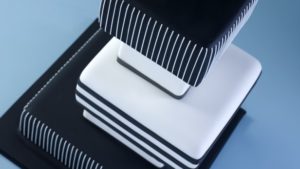
The impact of this stylish contemporary wedding cake is due to its immaculate geometric lines. Although it may look like a stack of 5 cakes, it is actually just three, with two smaller iced cake ‘dummies’ that hold the structure together. Warning: a steady hand is needed to pipe the straight white lines down the black iced cakes.
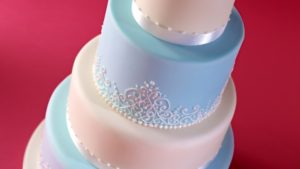
36 large eggs are needed to make this impressive four-tiered cake. Elegant in its simplicity it nevertheless boasts some inspiring detail. If you’re reticent about hand-piping the design directly onto the cake, you can use a scribing tool to mark out the design first, or you can draw the design onto baking parchment and then lean it carefully onto the cake. The sheen and gentle colouring of the icing alone make this cake a wedding favourite.
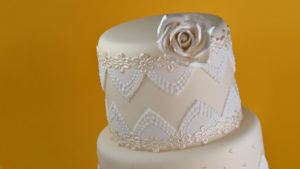
The soft, satiny champagne tone and almost iridescent quality of the icing make this cake an exquisite centerpiece. The beautifully crafted rose is a thing of beauty and worthy of a few attempts to get it just right. The lace detailing almost makes it a shame to cut into it, but sharing this cake with your guests means they can admire the pearlescent lustre of the finish up close.

It is, of course, the potency of the fuchsia that creates this cake’s dramatic impact. However, the delicate floral icing flowers soften the look so its appeal becomes gentler. It’s certainly well worth spending some time practising painting the flowers on some spare ready-rolled icing until you have the confidence to transfer your design to the cake itself.
Pink and metallic wedding cake
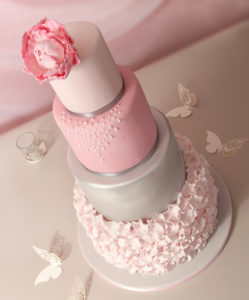
Silver and pink are perfect partners. This fairytale cake shows off the best in icing techniques, from the beautiful sheen of the silver fondant icing to the baby pink blossoms that smother the base. This approach requires a little experimentation as it involves mixing some of the sugar paste to get the gentle silver tone. Metallic spray on each tier and a fresh peony on the top complete the magical look.
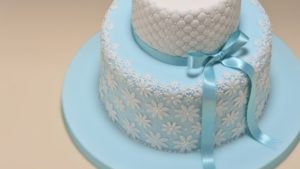
Because of the slightly more two-dimensional and cartoon-like quality of the flowers and the quilting technique, this cake would also do very well as a cake for a Christening or naming ceremony. The cake appears almost to have been embroidered and the success of the finished look is in its immaculate symmetry. Careful planning is required to ensure the spacing between blooms and icing pearls is just right.
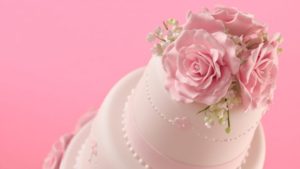
It’s hard to believe that the flowers that top this cake are in fact edible. This cake shows off techniques such as scalloping, and, of course, the delicate flower petals. One of the more labour-intensive cakes on our list, but its intricate beauty is well worth the effort.
Why not browse our recipes to explore more exciting
baking and decorating ideas?

